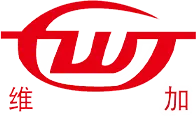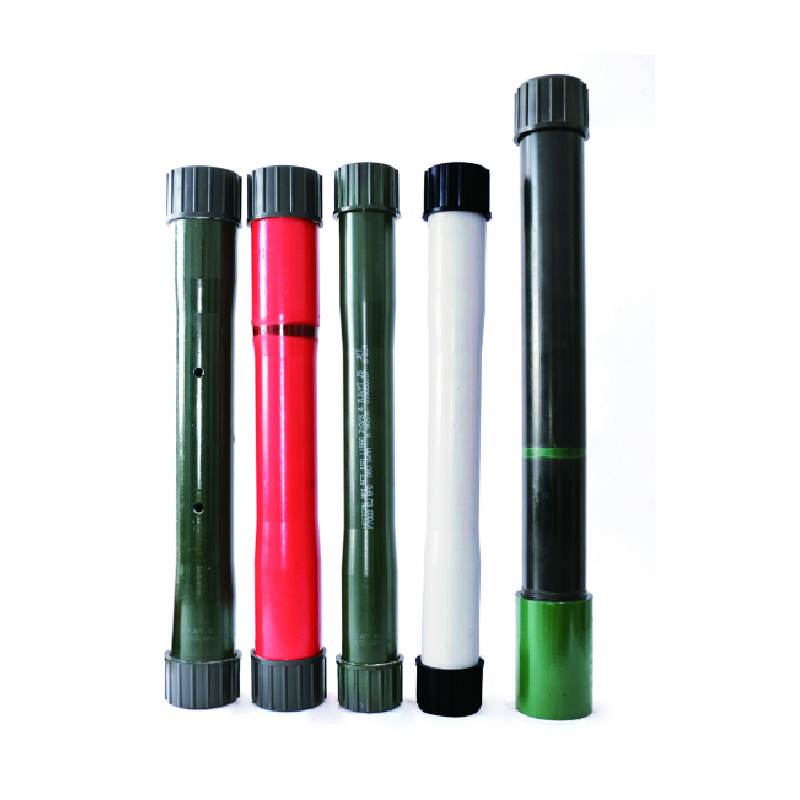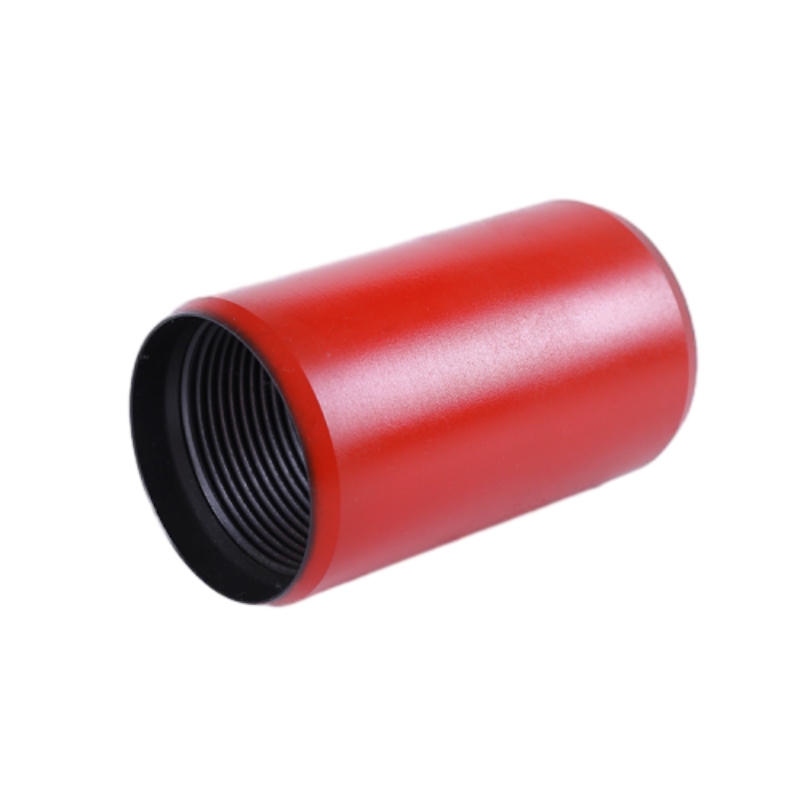Reliable Pup Joint Manufacturers for Oil & Gas Tubing
Navigating the Landscape of Pup Joint Manufacturing for Oil & Gas
In the demanding world of oil and gas exploration and production, every component plays a critical role in ensuring operational efficiency, safety, and longevity. Among these vital components, pup joints stand out as indispensable connectors used for adjusting the length of tubing or casing strings. Their precise dimensions and robust construction are paramount, making the selection of reliable pup joint manufacturers a strategic decision for any operator.
This comprehensive guide delves into the intricacies of pup joint manufacturing, highlighting industry trends, technical specifications, application scenarios, and the critical factors that differentiate leading pup joint manufacturers. We will explore the journey from raw material to finished product, emphasizing the stringent quality controls and advanced manufacturing processes that define excellence in this specialized field.
Industry Trends Shaping Pup Joint Manufacturing
The oil and gas industry is continuously evolving, driven by technological advancements, environmental regulations, and fluctuating market demands. These dynamics directly influence the requirements for drilling and completion equipment, including tubing pup joints. Several key trends are shaping the landscape for pup joint manufacturers:
- Increased Demand for High-Performance Materials: As exploration moves into more challenging environments (e.g., ultra-deepwater, HPHT – High-Pressure/High-Temperature), there's a growing need for pup joints made from exotic alloys and corrosion-resistant materials (CRAs) to withstand extreme pressures, temperatures, and corrosive fluids (H2S, CO2). This pushes pup joint manufacturers to invest in advanced metallurgy.
- Emphasis on Digitalization and Automation: Industry 4.0 principles are permeating manufacturing. Smart factories utilizing IoT, AI, and machine learning are optimizing production processes, enhancing precision, reducing waste, and improving traceability for pup joint manufacturers.
- Stringent Quality and Certification Requirements: Regulatory bodies and major operators are imposing stricter quality control and certification standards (e.g., API Spec Q1, ISO 9001, NACE MR0175). Compliance is no longer just an advantage but a necessity for reputable pup joint manufacturers.
- Focus on Supply Chain Resiliency: Geopolitical shifts and global events have highlighted the importance of robust and diversified supply chains. Pup joint manufacturers are working to shorten lead times, ensure material availability, and build stronger relationships with suppliers and distributors.
- Sustainability and Environmental Considerations: The industry is under pressure to reduce its environmental footprint. This translates to a demand for products with longer lifespans, reduced material waste during manufacturing, and adherence to environmental management systems by pup joint manufacturers.
These trends underscore the need for pup joint manufacturers to be agile, technologically advanced, and deeply committed to quality and compliance.
Understanding Tubing Pup Joint: Essential Product Information
A Tubing Pup Joint is a short length of tubing or casing used to adjust the overall length of a tubing or casing string to the nearest full joint. This critical component ensures that the string can be precisely spaced within the wellbore, accommodating various downhole tools and configurations.
Product Name: Tubing Pup Joint
Product URL: https://www.wjpetroleum.com/tubing-pup-joint.html
Key Technical Parameters
The specifications of Tubing Pup Joints are meticulously defined by API (American Petroleum Institute) standards, primarily API 5CT for Casing and Tubing. Reliable pup joint manufacturers adhere strictly to these guidelines.
The specific combination of these parameters determines the suitability of a pup joint for a given well condition. Reputable pup joint manufacturers ensure that their products meet or exceed these stringent API requirements.
Application Scenarios: Where Pup Joints Shine
Tubing Pup Joints are indispensable in a multitude of scenarios across the oil and gas value chain, particularly in drilling, completion, and production operations. Their primary function is to provide custom lengths to adjust the overall string, ensuring precise placement of equipment and optimal wellbore configuration.
- Oil and Gas Wells: In both conventional and unconventional wells, pup joints are used to accurately space out the tubing string, ensuring that packers, downhole gauges, safety valves, and other equipment are set at their exact design depths. This precision is crucial for efficient production and well integrity.
- Geothermal Wells: These wells often involve high temperatures and corrosive fluids. Pup joint manufacturers produce specialized pup joints with high-grade alloys that can withstand such extreme environments, ensuring long-term operational stability.
- Injection Wells (Water/Gas): For enhanced oil recovery (EOR) or waste disposal, injection wells require precise fluid delivery. Pup joints help tailor the injection string length to ensure optimal fluid placement and pressure control.
- Well Completions: During completion phases, pup joints are vital for setting and cementing operations, allowing for adjustments in casing or tubing strings to meet specific formation depths or liner hanger requirements.
- Workover and Intervention Operations: When repairing or modifying existing wells, pup joints facilitate the integration of new tools or sections into an existing string, adapting to unexpected downhole conditions.
Advantages in Typical Application Scenarios:
- Space Optimization: Pup joints allow engineers to achieve exact string lengths, optimizing downhole space and preventing issues like slack or excessive tension.
- Adaptability: They provide the flexibility to adapt to varying well depths, geological formations, and specific equipment requirements without needing to cut or alter standard length tubing/casing.
- Corrosion Resistance: For environments with H2S, CO2, or chlorides, pup joints made from NACE MR0175 compliant materials (e.g., L80, C90, T95, or CRAs) offer superior protection, extending the lifespan of the tubing string and preventing costly failures.
- Enhanced Safety: By ensuring precise string length, pup joints reduce the risk of buckling, excessive stress, or premature wear, thereby contributing to overall wellbore integrity and operational safety.
- Cost-Effectiveness: While seemingly small components, the ability of pup joints to precisely adjust string lengths avoids the need for on-site cutting and re-threading of standard joints, saving significant time and resources.
The versatility and precision offered by high-quality pup joints from trusted pup joint manufacturers are fundamental to the success and safety of modern oil and gas operations.
Technical Advantages Offered by Leading Pup Joint Manufacturers
The superior performance of a pup joint is not accidental; it is the direct result of advanced engineering, meticulous manufacturing, and stringent quality control. Leading pup joint manufacturers differentiate themselves through several key technical advantages:
- Precision Machining and Threading: Utilizing state-of-the-art CNC (Computer Numerical Control) machines, top pup joint manufacturers achieve exceptionally precise thread profiles. This ensures perfect compatibility with corresponding tubing or casing, preventing leaks, improving connection integrity, and facilitating quick and safe make-up on the rig floor. Adherence to API 5B standards for threading is non-negotiable.
- Advanced Metallurgical Control: The choice and treatment of materials are paramount. Reputable pup joint manufacturers employ advanced metallurgical processes, including precise heat treatment cycles (quenching and tempering), to optimize the mechanical properties of the steel. This enhances tensile strength, yield strength, and toughness, ensuring the pup joint can withstand extreme downhole forces.
- Superior Corrosion Resistance: For sour gas (H2S) and CO2 environments, the ability to resist corrosion is critical. Leading pup joint manufacturers produce pup joints compliant with NACE MR0175 / ISO 15156 standards. This involves using specific low-carbon, low-sulfur steel grades, precise heat treatments, and sometimes applying specialized internal coatings for enhanced protection against pitting and general corrosion.
- Exceptional Longevity and Reliability: Through rigorous testing and quality assurance at every stage of production, the lifespan of pup joints from top manufacturers is significantly extended. Their products are designed to perform reliably under continuous stress, minimizing the risk of premature failure and costly downtime.
- Comprehensive Non-Destructive Testing (NDT): Before shipment, every pup joint undergoes multiple layers of NDT, including Electromagnetic Inspection (EMI) for longitudinal and transverse defects, Ultrasonic Testing (UT) for internal flaws, and Magnetic Particle Inspection (MPI) for surface cracks. This thorough inspection process guarantees defect-free products, ensuring the highest level of safety and reliability.
- Hydrostatic Pressure Testing: Each pup joint is subjected to hydrostatic pressure testing, simulating downhole conditions to verify its pressure integrity and seal capability. This crucial test confirms that the pup joint can withstand the design pressure without leakage or deformation.
These technical advantages not only ensure compliance with international standards but also provide operators with the confidence that their well completion components are robust, reliable, and capable of performing in the most challenging oil and gas environments.
The Manufacturing Journey: A Glimpse into Pup Joint Production
The creation of a high-quality Tubing Pup Joint is a multi-stage process that combines precision engineering, advanced metallurgy, and strict quality control. Reputable pup joint manufacturers follow a detailed protocol to ensure every product meets the highest industry standards.
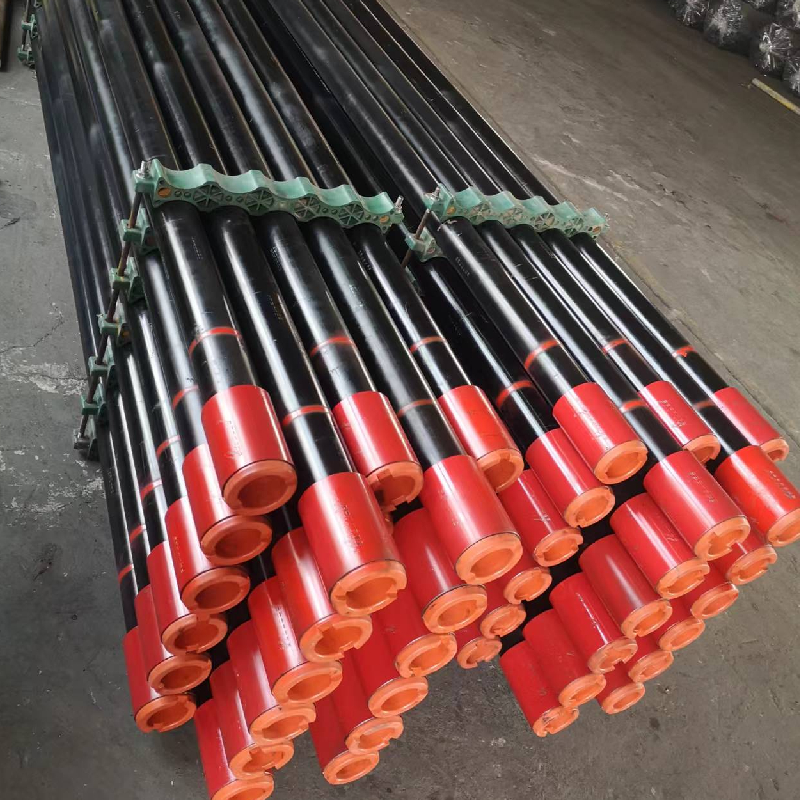
Process Flow of a Leading Pup Joint Manufacturer:
-
Raw Material Inspection & Selection:
Begins with the careful selection of high-grade seamless steel pipe, typically sourced from API certified mills. Materials like API 5CT J55, K55, N80, L80, C90, T95, P110, and specialized CRAs are chosen based on the specified grade and application requirements (e.g., sour service, HPHT). Comprehensive Mill Test Certificates (MTCs) are verified to confirm chemical composition and mechanical properties.
Expert Insight: Material traceability is crucial. Each batch of raw material is assigned a unique identifier, ensuring full traceability from the mill to the finished product. This is a cornerstone of API Spec Q1 quality management systems. -
Cutting to Length:
The steel pipes are precisely cut to the required pup joint lengths (e.g., 2ft, 4ft, 6ft, 8ft, 10ft, 12ft, or custom dimensions) using high-precision cutting equipment to minimize material waste and ensure dimensional accuracy.
-
Upsetting / Forging (for EUE & BTC connections):
For External Upset End (EUE) and Buttress Thread Casing (BTC) connections, the ends of the pipe are heated and forged (upset) to increase their wall thickness. This provides additional material for threading, enhancing connection strength and preventing thread stripping under stress.
Technical Detail: Upsetting is a critical process that strengthens the connection area, ensuring the pipe body is not the weakest link in the string. Proper temperature control during forging is vital to maintain material integrity. -
Heat Treatment:
After upsetting, the pup joints undergo specific heat treatment cycles (Quenching and Tempering – Q&T). This process involves heating the steel to high temperatures and then rapidly cooling it (quenching), followed by reheating to a lower temperature (tempering). This refines the grain structure, enhances hardness, improves yield and tensile strengths, and ensures consistent mechanical properties throughout the joint, especially important for sour service grades (L80, C90, T95).
-
CNC Machining & Threading:
The heat-treated blanks are transferred to advanced CNC (Computer Numerical Control) lathes. Here, the pipe body is machined to precise outer diameter (OD) and inner diameter (ID) tolerances, and critical threads (EUE, NUE, BTC, or premium connections) are precisely cut. This ensures seamless make-up with standard tubing/casing and robust seal integrity.
Process Highlight: CNC machining offers unparalleled precision, ensuring thread forms, tapers, and lead are perfectly within API 5B specifications, reducing galling and improving connection reliability. -
Coupling Attachment:
For threaded and coupled designs, couplings are precisely manufactured and torqued onto one end of the pup joint. Couplings are often coated with anti-galling compound before make-up.
-
Non-Destructive Testing (NDT):
Each pup joint undergoes comprehensive NDT to detect any hidden defects. This includes:
- Electromagnetic Inspection (EMI): Detects longitudinal and transverse defects, wall thickness variations.
- Ultrasonic Testing (UT): Identifies internal flaws, laminations, and inclusions.
- Magnetic Particle Inspection (MPI): Detects surface and near-surface discontinuities, especially critical after threading.
-
Hydrostatic Pressure Testing:
The pup joint is subjected to internal pressure testing to a specified level, typically 80% of the minimum yield strength, for a defined hold time. This verifies the integrity of the pipe body and the threaded connections under simulated operating pressures, ensuring no leaks or structural weaknesses.
Quality Standard: Hydrostatic testing is a mandatory final check, ensuring that each pup joint can safely withstand the anticipated wellbore pressures, adhering to API 5CT and internal quality standards. -
Final Inspection & Surface Treatment:
A final visual and dimensional inspection is performed. Threads are meticulously cleaned, greased with thread compound (e.g., API Modified), and protected with robust thread protectors. The entire pup joint may undergo surface treatment like painting or coating for corrosion protection during storage and transport.
-
Marking & Packaging:
Each pup joint is permanently marked with essential information including manufacturer's name, API monogram, grade, size, weight, heat number, and length, ensuring full traceability. They are then securely bundled and packaged for safe shipment.
This rigorous manufacturing process, from material sourcing to final packaging, underscores the commitment of leading pup joint manufacturers to delivering products that meet the highest standards of reliability and performance in the demanding oil and gas industry.
Comparing Leading Pup Joint Manufacturers
Choosing the right pup joint manufacturers is crucial for project success. While many suppliers exist, a select few stand out due to their commitment to quality, technological prowess, and customer service. Here's a comparative overview of what distinguishes top-tier manufacturers:
When evaluating pup joint manufacturers, prioritize those with proven track records, comprehensive certifications, and a deep understanding of the demanding oil and gas environment. WJ Petroleum, for instance, embodies the characteristics of a leading manufacturer, dedicated to delivering superior API-certified tubing pup joints.
Tailored Solutions: Customization from Leading Pup Joint Manufacturers
While standard API 5CT pup joints cover most applications, certain complex or specialized well designs require custom solutions. Top pup joint manufacturers excel in providing tailored products that precisely meet unique operational demands. This ability to customize is a significant advantage, reducing field modifications and ensuring optimal performance.
Customization options typically include:
- Non-Standard Lengths: Beyond the common 2ft, 4ft, 6ft, 8ft, 10ft, 12ft increments, manufacturers can produce pup joints to exact specified lengths, critical for precise equipment spacing in the wellbore.
- Special Material Grades: For highly corrosive or extreme HPHT environments, customization extends to using specific Corrosion Resistant Alloys (CRAs) like Duplex, Super Duplex, or Nickel-based alloys, compliant with NACE MR0175/ISO 15156.
- Premium Thread Connections: While EUE, NUE, and BTC are standard, premium proprietary connections (e.g., VAM, Tenaris Hydril, JFE Bear) can be machined onto pup joints. These offer superior seal integrity, higher torque capacity, and enhanced resistance to galling, crucial for demanding applications.
- Special End Finishes/Coatings: Custom internal or external coatings (e.g., epoxy, phenolic, or specialized corrosion inhibitors) can be applied to extend lifespan in highly aggressive fluid streams or external environments.
- Specific Testing Protocols: Beyond standard API testing, customers can request additional non-destructive testing, higher hydrostatic pressure tests, or even collapse resistance tests to validate performance for specific well conditions.
Engaging with a pup joint manufacturer early in the design phase allows for bespoke solutions that integrate seamlessly into the overall well architecture, leading to enhanced efficiency and reduced operational risks. Companies like WJ Petroleum offer comprehensive engineering support to develop these custom solutions, demonstrating their commitment to client-specific needs.
Application Cases & Customer Experience
The true measure of a pup joint manufacturer's reliability lies in their real-world application success and customer satisfaction. Here are simulated case studies reflecting common challenges and how high-quality pup joints provide solutions:
Case Study 1: Mitigating Corrosion in Sour Gas Wells
Challenge: A major operator in the Middle East was facing premature failure of conventional carbon steel pup joints in their sour gas wells due to severe H2S and CO2 corrosion. This resulted in frequent workovers, significant production losses, and safety concerns.
Solution: They partnered with a leading pup joint manufacturer (like WJ Petroleum) capable of producing API 5CT L80 Type 1 (NACE MR0175 compliant) pup joints with specialized internal corrosion-resistant coatings. The manufacturer provided tubing pup joints in various lengths (4ft, 6ft, 8ft) with EUE connections, ensuring full compatibility with existing infrastructure.
Outcome: After deploying these specialized pup joints, the operator observed a dramatic reduction in corrosion-related failures. The lifespan of the tubing strings significantly increased, leading to an estimated 30% reduction in workover frequency and a substantial improvement in production uptime over a two-year period. The client praised the manufacturer's technical expertise and adherence to NACE standards.
Case Study 2: Precision Spacing in Deepwater Completions
Challenge: An offshore drilling contractor operating in the Gulf of Mexico required extremely precise spacing for critical downhole equipment (e.g., intelligent completion systems, safety valves) within a deepwater well. Standard tubing lengths introduced unacceptable tolerance stacking, risking equipment misalignment.
Solution: The contractor engaged a responsive pup joint manufacturer known for its customization capabilities. The manufacturer produced custom-length P110 tubing pup joints with premium threaded connections, ensuring dimensional accuracy to within 1/8 inch, significantly tighter than standard API tolerances.
Outcome: The custom pup joints allowed for perfect placement of downhole tools, eliminating any spacing issues. This precision streamlined the completion process, reduced rig time by an estimated 24 hours, and ensured optimal functionality of the intelligent completion system. The contractor lauded the manufacturer's engineering team for their collaborative approach and rapid delivery of bespoke solutions.
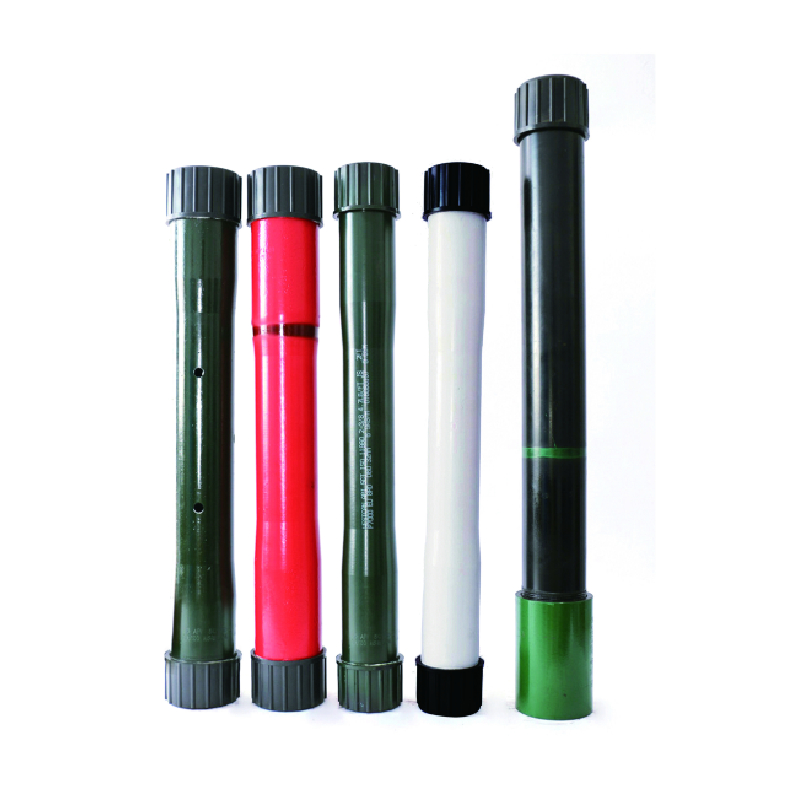
Customer Feedback:
"We've relied on WJ Petroleum for our tubing pup joint needs for over a decade. Their consistent adherence to API standards, coupled with their willingness to provide expedited custom lengths for urgent projects, has been invaluable. Their products always arrive with complete documentation, instilling absolute confidence in their quality. They are truly one of the most reliable pup joint manufacturers in the industry."
— Senior Procurement Manager, International Oil & Gas Company
Trustworthiness & Customer Support
For any component in the oil and gas sector, trustworthiness is built on more than just product quality. It encompasses transparency, reliable support, and clear commitments. Leading pup joint manufacturers prioritize these aspects:
- Certifications & Compliance: Adherence to global standards like API 5CT, API 5B, API Spec Q1, ISO 9001, and NACE MR0175 is non-negotiable. These certifications demonstrate a commitment to rigorous quality management systems and product performance.
- Detailed Documentation: Each shipment is accompanied by complete Mill Test Certificates (MTCs), inspection reports, hydrostatic test reports, and any other relevant compliance documentation. This transparency allows clients to verify material composition and testing results.
- Clear Delivery Timelines: Reliable pup joint manufacturers provide realistic and consistent lead times, with robust supply chain management to ensure on-time delivery, minimizing project delays.
- Comprehensive Quality Assurance (QA) and Quality Control (QC): Beyond mandatory tests, top manufacturers implement additional internal QA/QC measures, often exceeding API minimums, to guarantee product integrity. This includes additional dimensional checks, thread profile inspections, and even specialized mechanical testing for critical applications.
- Robust Warranty & Support: A clear warranty policy covering manufacturing defects and performance issues provides peace of mind. Excellent customer support, including technical assistance, troubleshooting, and responsive communication channels, is also a hallmark of a trustworthy partner.
By upholding these principles, pup joint manufacturers like WJ Petroleum build long-term trust and become preferred partners in the oil and gas industry.
Professional FAQ: In-Depth Understanding of Pup Joints
Q1: What does API 5CT mean in the context of Tubing Pup Joints?
A1: API 5CT is a specification by the American Petroleum Institute that covers technical delivery conditions for steel pipes (casing, tubing, and pup joints) for use in petroleum and natural gas industries. It specifies material grades (J55, N80, P110 etc.), dimensional tolerances, mechanical properties, testing requirements (e.g., hydrostatic, non-destructive), and coupling specifications. Compliance with API 5CT ensures the pup joint meets industry-recognized standards for safety and performance.
Q2: What is the significance of NACE MR0175 for pup joints?
A2: NACE MR0175 (now ISO 15156) is an international standard that defines the requirements for metallic materials to be resistant to sulfide stress cracking (SSC) in H2S-containing environments (sour service) encountered in oil and gas production. For pup joints, being NACE MR0175 compliant means they are manufactured from specific steel grades (e.g., L80, C90, T95) with controlled hardness and heat treatment, making them suitable for corrosive conditions and preventing brittle failure due to hydrogen sulfide.
Q3: How important is the heat treatment process for pup joint quality?
A3: Heat treatment, particularly Quenching and Tempering (Q&T), is profoundly important. It precisely controls the microstructure of the steel, thereby optimizing its mechanical properties such as yield strength, tensile strength, hardness, and toughness. For example, Q&T is essential for achieving the specific strength and ductility profiles required for high-grade pup joints (e.g., P110) or ensuring the corrosion resistance of sour service grades (e.g., L80 Type 1) as per NACE MR0175.
Q4: What is the difference between EUE and NUE threads on pup joints?
A4: EUE (External Upset End) threads are characterized by a thicker wall at the pipe end, which is achieved through upsetting/forging. This increased wall thickness provides more material for threading, making the connection stronger and less prone to galling or stripping, especially under tension. NUE (Non-Upset End) threads do not have this upset, meaning the wall thickness at the thread remains the same as the pipe body. NUE connections are typically used for lighter duty or lower pressure applications, while EUE is more common for tubing due to its enhanced strength and sealing capability.
Q5: How do pup joint manufacturers ensure dimensional accuracy?
A5: Leading pup joint manufacturers ensure dimensional accuracy through several methods: using precision cutting equipment for initial lengths, employing advanced CNC (Computer Numerical Control) machines for highly accurate machining of pipe bodies and threads, and conducting frequent in-process and final dimensional inspections using calibrated gauges and measuring instruments. Adherence to strict API 5CT and API 5B dimensional tolerances is verified at multiple stages.
Q6: What is the typical lifespan of a pup joint in an oil and gas application?
A6: The lifespan of a pup joint varies greatly depending on its material grade, the specific well environment (e.g., presence of corrosives, high pressure/temperature), operational stresses, and the quality of manufacturing. Properly selected and manufactured pup joints from reputable pup joint manufacturers, especially those compliant with NACE and high API grades, can last for many years, often matching the lifespan of the main tubing string, provided they are not subjected to unexpected external damage or extreme unforeseen conditions.
Q7: What non-destructive tests are typically performed on pup joints?
A7: Standard non-destructive tests (NDT) performed on pup joints include Electromagnetic Inspection (EMI) for detecting longitudinal and transverse defects, Ultrasonic Testing (UT) for identifying internal flaws and wall thickness variations, and Magnetic Particle Inspection (MPI) for locating surface and near-surface cracks, especially in the threaded areas. These tests are critical for ensuring the structural integrity of each pup joint before it is shipped for use in the field.
Conclusion: Partnering with Leading Pup Joint Manufacturers
In the high-stakes environment of oil and gas operations, the reliability of every single component is non-negotiable. Tubing pup joints, while often seen as minor connectors, play a pivotal role in ensuring the precise spacing, integrity, and longevity of tubing and casing strings. The decision to partner with dependable pup joint manufacturers directly impacts operational efficiency, safety, and ultimately, profitability.
Leading pup joint manufacturers distinguish themselves through an unwavering commitment to API standards, advanced manufacturing processes including precise heat treatment and CNC machining, comprehensive quality control (including extensive NDT and hydrostatic testing), and the capability to provide tailored solutions for challenging applications. Their expertise in material selection, coupled with robust quality assurance systems like API Spec Q1 and ISO 9001, ensures that every pup joint delivers optimal performance even in the most corrosive or high-pressure, high-temperature (HPHT) environments.
Choosing a manufacturer with a proven track record, demonstrated through stringent certifications, consistent on-time delivery, and positive client testimonials, is paramount. Such partners provide not just products, but peace of mind, contributing significantly to the overall success and safety of drilling and production endeavors. By investing in quality from the outset, operators can mitigate risks, reduce downtime, and achieve long-term operational excellence.
For more information on high-quality tubing pup joints and to explore customization options, visit our product page: Tubing Pup Joint.
Further Reading and References
- API Standard 5CT: Specification for Casing and Tubing. American Petroleum Institute. (Referenced via API's official website for general standards information)
- NACE MR0175 / ISO 15156: Petroleum and natural gas industries—Materials for use in H2S-containing environments in oil and gas production. NACE International. (Referenced via NACE International for standards information)
- Oil & Gas Journal Articles: Insights into material science and corrosion control in downhole applications. (General reference to industry publication for material science trends)
- SPE Publications: Technical papers on well completion design and component performance. (General reference to Society of Petroleum Engineers for technical papers)
-
Tubing Crossover - API Compatible, Custom Sizes, In StockNewsNov.10,2025
-
Tubing Coupling | High-Strength, Leak-Proof Steel CouplingsNewsNov.10,2025
-
Wholesale API Threading Casing Coupling | API 5CT, Fast ShipNewsNov.10,2025
-
Pup Joint Supplier | API Certified, Custom, Quick ShipNewsNov.10,2025
-
Pup Joint Manufacturers | Precision Machined, Fast DeliveryNewsNov.10,2025
-
Tubing Coupling | Precision Steel, Leak-Proof, Fast DeliveryNewsNov.03,2025
